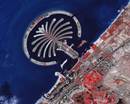Deutsches Museum Competition: Anthropocene Scenarios
Submission Date: 9 August 2013
22.04.2013
One Future? Many Futures!
The Deutsches Museum and the Rachel Carson Center invite you to take part in the making of the special exhibition “Anthropocene—Nature and Technology in the Age of Humans.” The exhibition, which examines the profound changes that humans are making on Earth, will be on display from October 2014 to July 2015 in Munich. To describe these changes, Paul J. Crutzen, a Nobel Laureate in Chemistry, came up with the term “Anthropocene”—a new geological epoch shaped by humans that has just recently begun.
The exhibition will include a number of scenarios for the future. The Deutsches Museum and the Rachel Carson Center for Environment and Society (RCC) invite interested groups, institutions, and individuals to help determine what these visions of the future will look like. “Scenarios make it possible to creatively depict positive and negative, expected and unexpected, desired and undesirable changes, and they make it easier to think about the future. We want to show that there is not just a single predetermined future, but rather many possible futures,” says the historian Prof. Helmuth Trischler, head of research at the Deutsches Museum and co-director of the RCC. “We want to consider as many different perspectives as possible and incorporate the creativity and knowledge of the people,” says geologist Reinhold Leinfelder (FU Berlin), one of the organizers of the exhibition.
The scenarios should consider the following topics: urbanization, food, mobility, evolution, human-machine relations, nature, and environmental awareness. Possible scenarios might portray what would happen if mankind—or particular societies—decides to “go back to nature”; if they attempt to solve all their problems with technology; if they choose not to respond to threats until directly confronted with catastrophes; or if they manage to successfully integrate technology and nature. The time period should be between 2020 and the distant future.
Contributions will become a part of the preparations for the special exhibition “Anthropocene,” and the creators must therefore make the content freely available. Entries will be judged by a high-profile jury based on their originality, creativity, and plausibility. The winning entries will also be prominently presented during the period of the exhibition.
The competition is aimed at groups and institutions such as school classes, clubs, universities, public authorities, and initiatives, as well as interested individuals. Submissions may take the form of essays of up to 2000 words, graphic portrayals, comics, and short films of up to four minutes in length. They should be submitted electronically, in German or English, by 9 August 2013 to vielezukuenfte@deutsches-museum.de.
If you have further questions, please contact:
Dr. Nina Möllers
Project Manager/Curator
Tel. 089 / 2179 – 284
n.moellers@deutsches-museum.de


